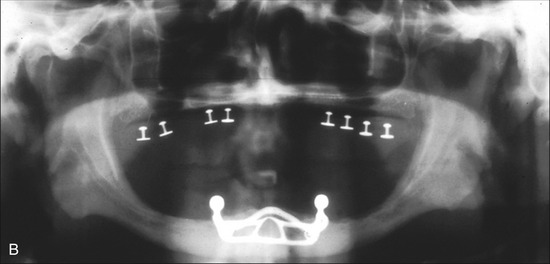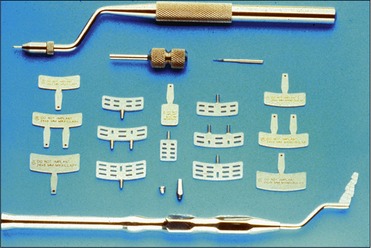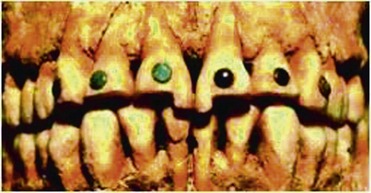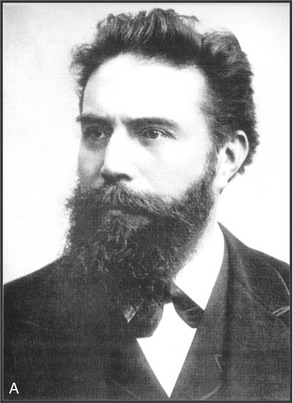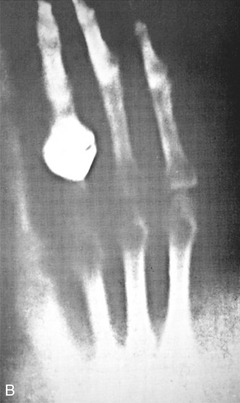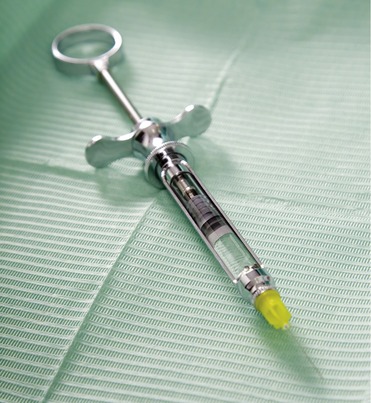chapter 1 The Historical Development of Dental Implants
The historical development of implants before the modern era in dentistry began (since approximately 1700) can be discussed only tangentially, and we must be careful not to apply modern methods of thinking—especially regarding technological skill—to ancient practices, because only in the twentieth century have nonautologous materials existed that could be fashioned for medical use to avoid their rejection by the human body.1 Only since the end of the first quarter of the twentieth century have modern dental implants been developed and widely used. These implants fall roughly into two major categories: subperiosteal implants (which rest on alveolar bone beneath the gingiva and usually are not attached to the severely resorbed jawbone for which these implants were designed) and endosseous implants (which are placed within the alveolar bone) (Figure 1-1). Variations of the endosseous implant include the blade implant (which, as its name implies, is a thin, elongated, flat device designed to be secured in narrow, even knife-edged alveolar bone) (Figure 1-2), the ramus frame implant (which is designed for the completely edentulous mandible and is secured anteriorly in a single point, as well as posteriorly on each side of the jaw), the transosseous implant (which penetrates the entire jaw and emerges below the jaw, where it is secured), and the root-form implant or cylindrical implant (which resembles an actual tooth root and can be threaded or simply cylindrical with no threads). Therefore, only within the context of the twentieth and twenty-first centuries can a discussion of the historical development of dental implants be practically undertaken, and always within the confines of the two crucial issues of tooth function and esthetics for individual patients.
Dentistry and Dental Implants in the Pre-Modern Era
Pain Relief, Better Function, and Pretty Smiles
With important exceptions, the modern definition of a dental implant can be used to describe the kinds of devices used for centuries as replacements for missing teeth. For example, the American Dental Association defines dental implants as “manufactured devices that are placed surgically in the upper or lower jaw, where they function as anchors for replacement teeth. Implants are made of titanium and other materials that are compatible with the human body.”2 Except for the word “titanium” and the phrase “compatible with the human body,” this definition describes tooth replacement options available since the dawn of time.
A variety of other ancient cultures have provided us with evidence of the practice of dentistry, fundamentally to maintain or restore patient function or esthetics. These ancient dental practitioners included Hindus (who treated gum disease and used a variety of dental instruments, including those for extraction and for drilling to place gold in teeth); Chinese and Japanese (who used acupuncture to treat toothache); Hebrews (who used gold and silver to replace missing teeth), Phoenicians (who used the teeth extracted from slaves to replace those of the more worthy!); Etruscans (who used gold to fashion bands used for dental bridges); Greeks and Romans (who used a variety of dental instruments, developed theories of mouth disease, used bridges to replace missing teeth, and practiced rudimentary forms of orthodontics); and Mayans (who used stones and metal inlays to decorate teeth) (Figure 1-3).
The first “true dental replacements,” according to Malvin E. Ring, can be attributed to the early Etruscans, who, as already noted, experimented not only with dental bridges but with tooth replacements fashioned from oxen bones.3 The first endosseous implant is probably of Mayan origin (7th century ad) and was constructed of sea shells and placed in the mandible. A mandibular implant fashioned of stone has been verified as attributable to a Honduran civilization, circa 800 ad (Figure 1-4).3
Scientific and Technical Advancements
As the practice of dentistry became more respectable and accepted by the masses, dental schools began to form, particularly after mid-century, following, in 1839, the establishment of the first dental school in the world, the Baltimore College of Dental Surgery. Establishment of not only dental schools but also dental societies and dental journals spread in the nineteenth century from America to Europe. Scientific advancements in the nineteenth century that clearly and significantly affected the practice of dentistry included American dentist Greene Vardiman Black’s invention of the foot-powered dental drill (1858), Louis Pasteur’s theories concerning germs (1860), Robert Koch’s experiments with bacterial growth specifically related to the study of tooth decay, and biochemist Willoughby Dayton Miller’s experiments showing the connection between sugar and tooth decay (1890). The late nineteenth century discovery of X-rays by Wilhelm Conrad Roentgen led to the use of radiography to treat impacted teeth and other jaw disorders (Figure 1-5).
Early twentieth-century discoveries important to the development of dentistry and of implantology include the development of materials more malleable than plaster for the taking of dental impressions. Albert Einhorn’s development of Novocaine as a local anesthetic led to the replacement of the use of general anesthetics for drilling and extractions (Figure 1-6).
Stay updated, free dental videos. Join our Telegram channel

VIDEdental - Online dental courses



